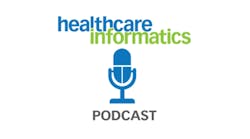As my fellow HCI blogger Gabriel Perna noted recently, the American Hospital Association took some heat from consumer advocates for its comments on Stage 2 meaningful use standards. The AHA objects to the CMS requirement that forces hospitals to allow patients to view or download their health information within 36 hours of discharge, instead recommending a 30-day period for providing access.
This question of when and how patients access their own records seems to be heating up quite a bit. Last week I wrote about the OpenNotes project, which is designed to study what would happen if patients had regular access to their primary care physicians’ notes about their visits. In the research study, patients were invited to read the notes written by their doctors following office visits, e-mail correspondence and phone calls. They are able to view these notes via the portals where other portions of their medical records are posted. Results of that study will be published soon, and it will raise lots of intriguing issues about clinician workflow and control of data.
Then last week I attended a National eHealth Collaborative webinar on the role patients can play in improving the quality of EHR data. It basically asked the question: Is there an opportunity for physicians to take advantage of patient knowledge to improve the quality of information in their EHRs? Erin Poetter, consumer e-health policy analyst for the Office of the National Coordinator, noted that one of the primary objectives of the HITECH Act is to increase patient access to information. She also noted that her boss, Farzad Mostashari, M.D., is fond of saying that we have millions of free fact checkers out there if we can work through the technology and policy issues to allow them to more fully participate in the process.
Because consumer queries about the accuracy and completeness of patient records are only expected to grow, ONC funded a study on patient input by the National Opinion Research Center (NORC) at the University of Chicago.
The NORC study surveyed eight health systems with advanced portals and found that many were working on ways to include patient feedback. Some acknowledge the potential for errors and recommend patients contact their providers if they notice any. Others build on this type of encouragement by providing online mechanisms to accept patient input. “But no standard approaches to patient feedback have emerged,” said Prashila Dullabh, M.D., NORC’s health IT program area director. She noted that among things provider organizations need in order to incorporate patient input are:
• Processes for reconciling patient input;
• Tools and systems for managing responses;
• Methods for storing patient input;
• Methods for propagating corrections.
NORC is collaborating with the Geisinger Health System in Pennsylvania on different triage models to deal with patient responses. The systems need to automate as much as possible, Dullabh said, so as not to overwhelm staff members, but the process cannot be completely automated.
All of these efforts — the meaningful use Stage 2 changes, the OpenNotes project and the work to incorporate patient corrections to EHR errors — will test the industry’s commitment to the principles that are widely espoused about improving patient engagement. Organizations trying to stem the tide of consumer engagement in health record keeping will likely be unsuccessful.
Sponsored Recommendations
Sponsored Recommendations

